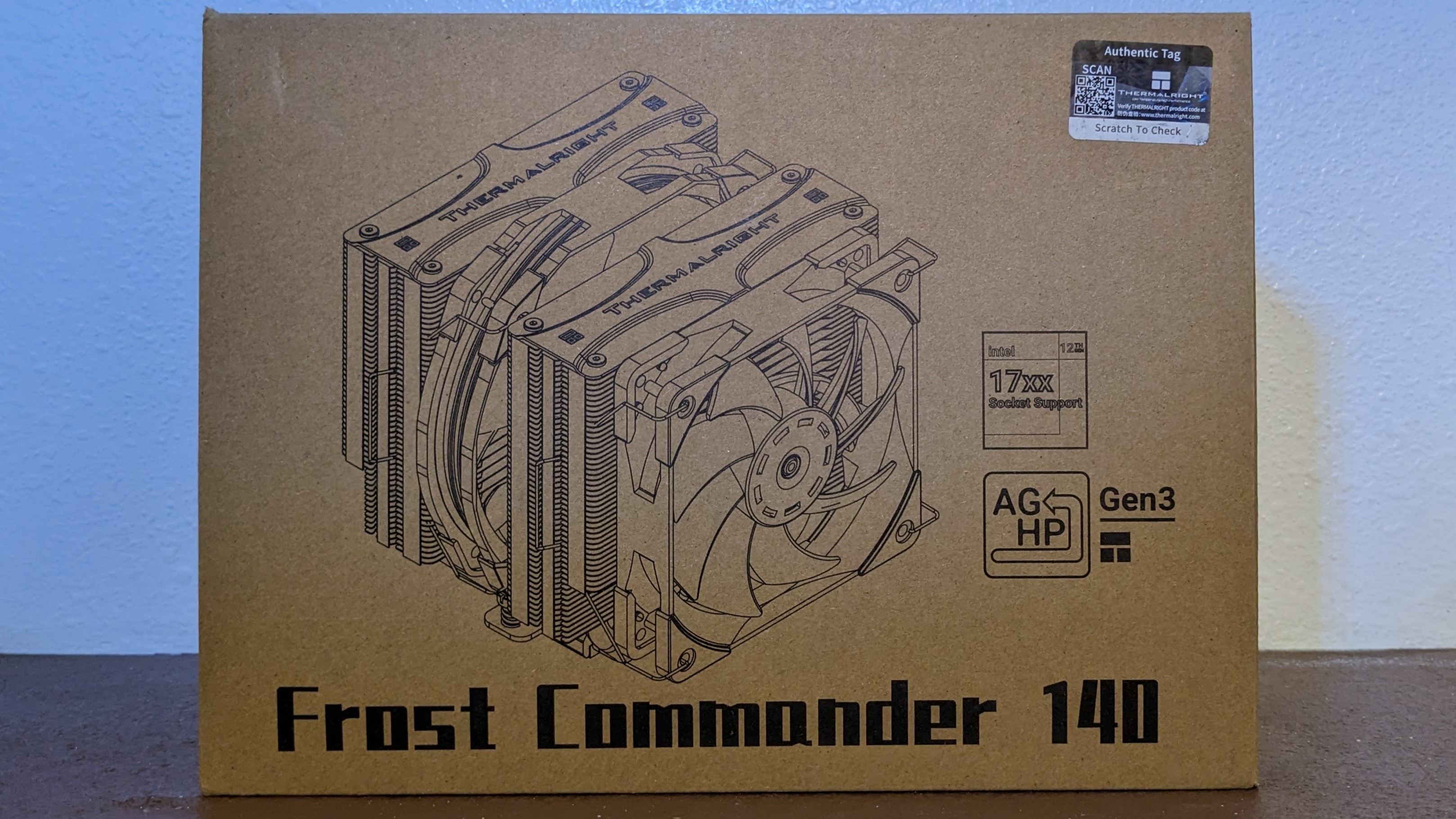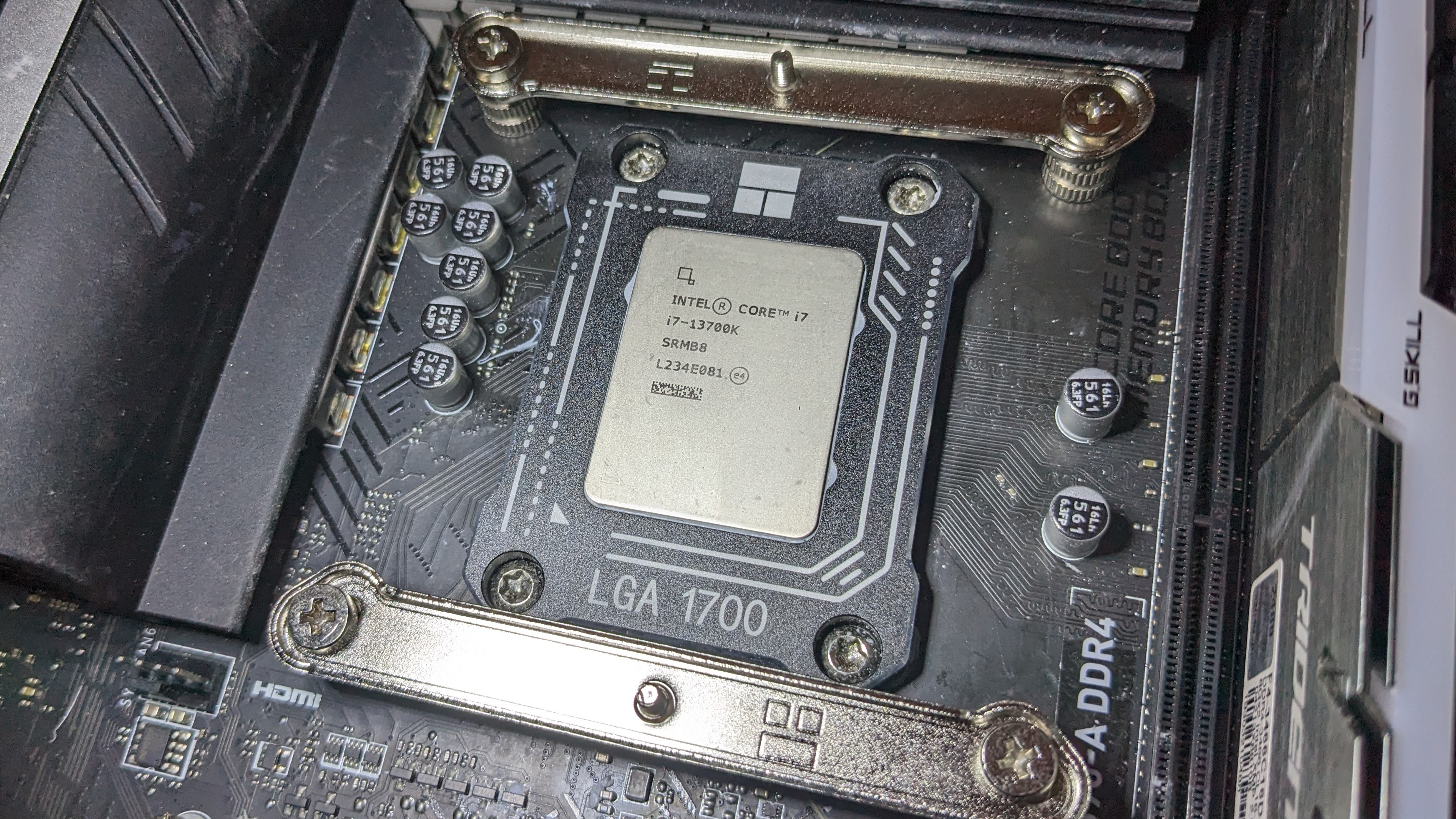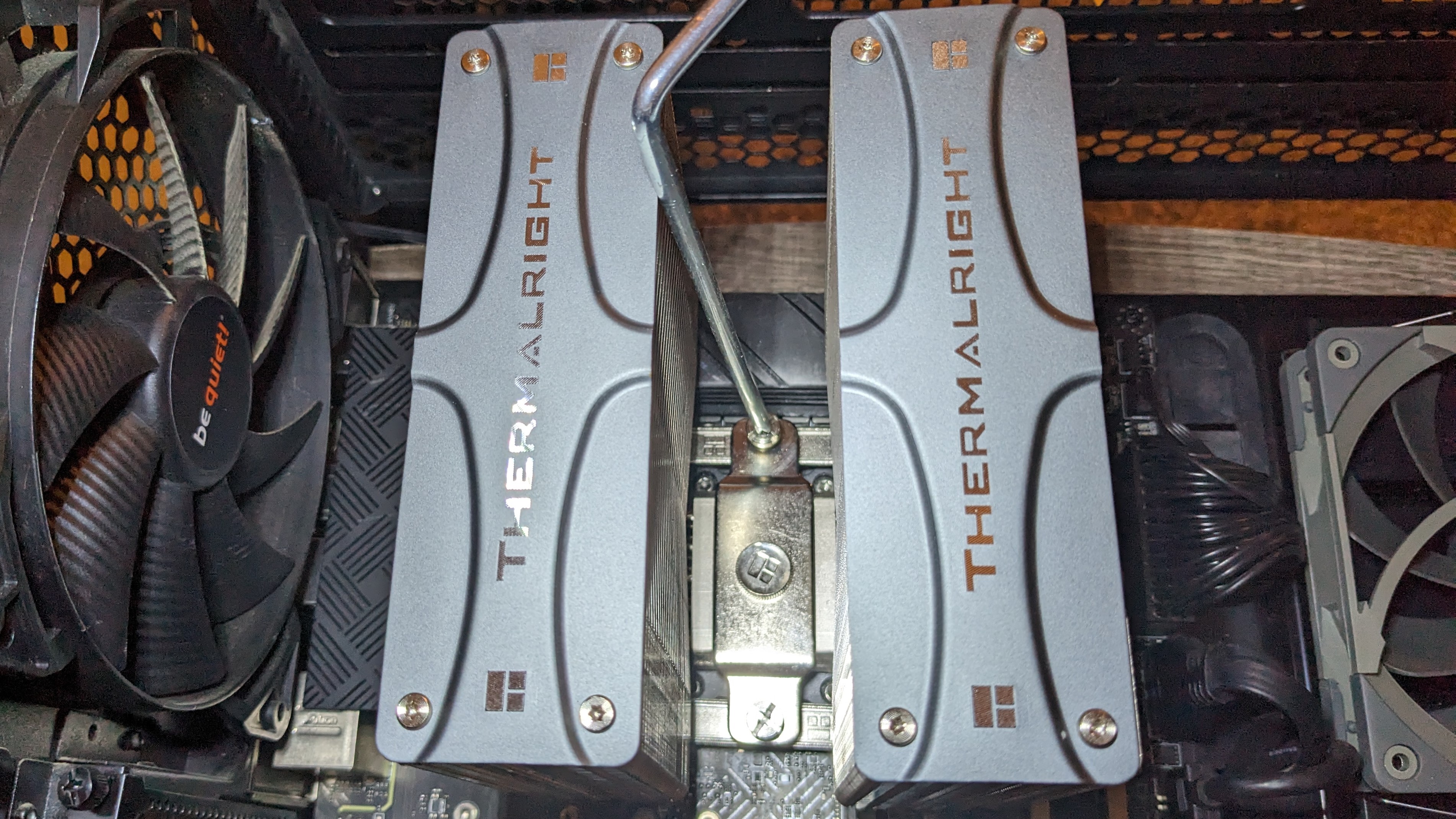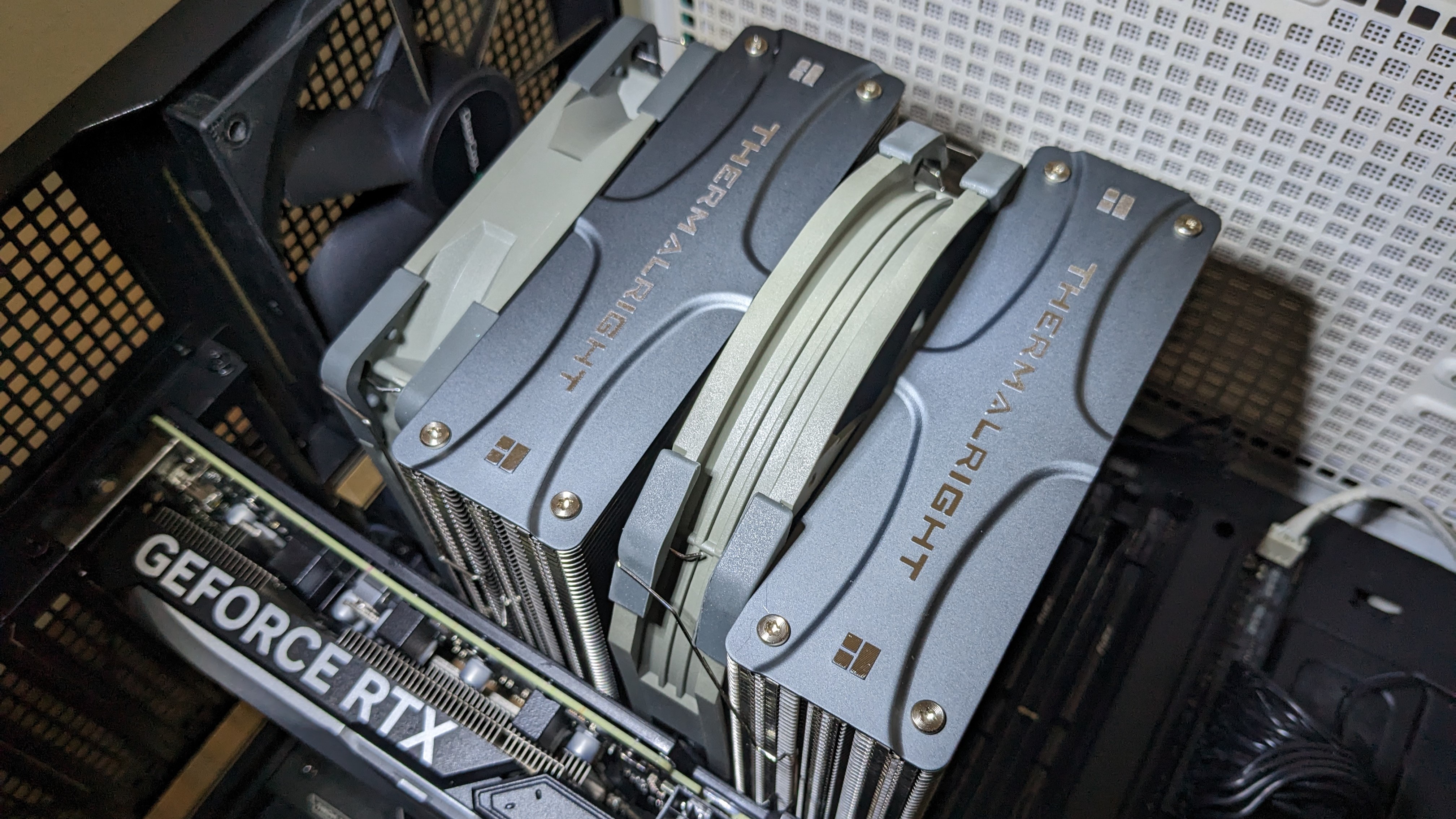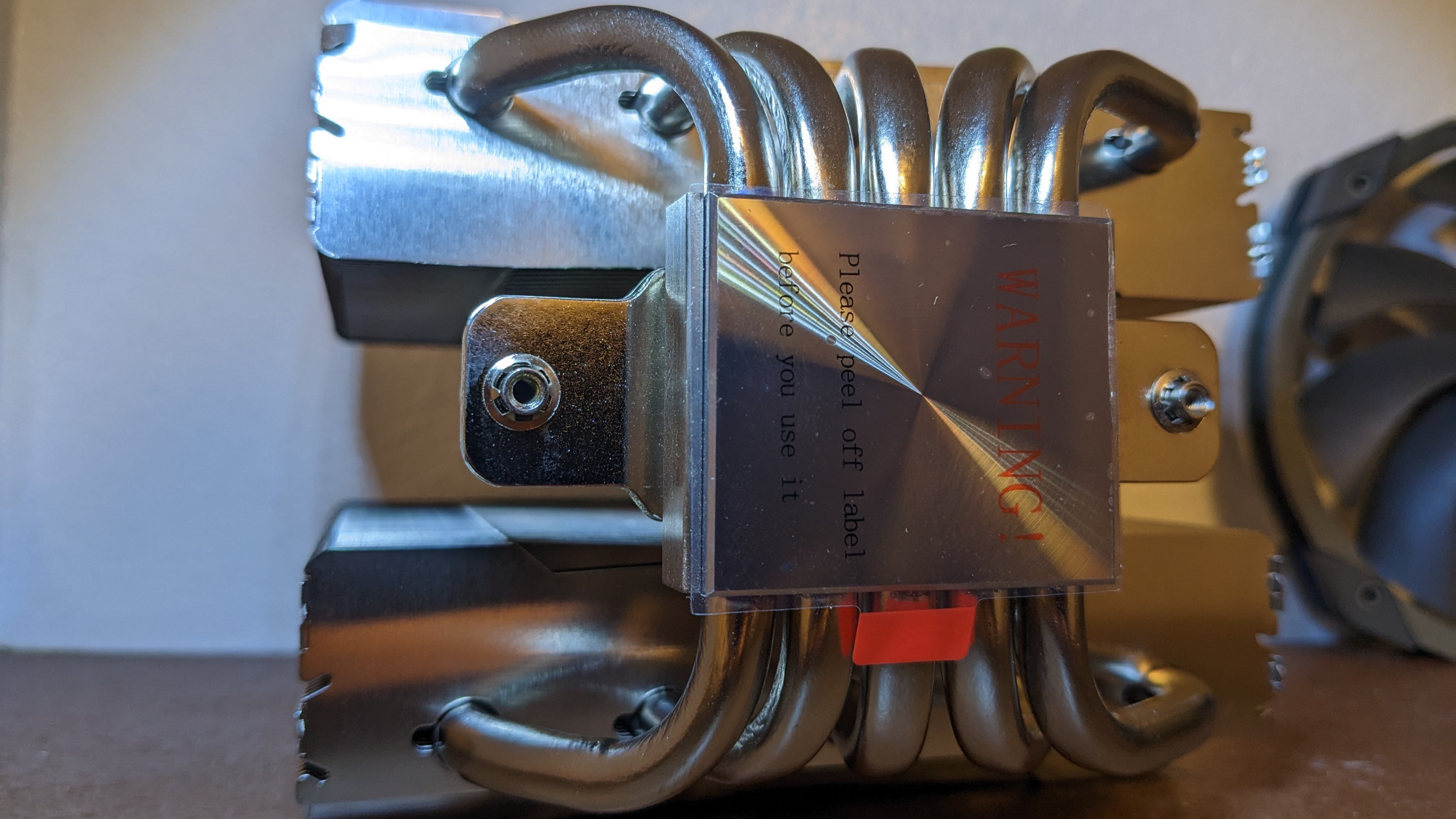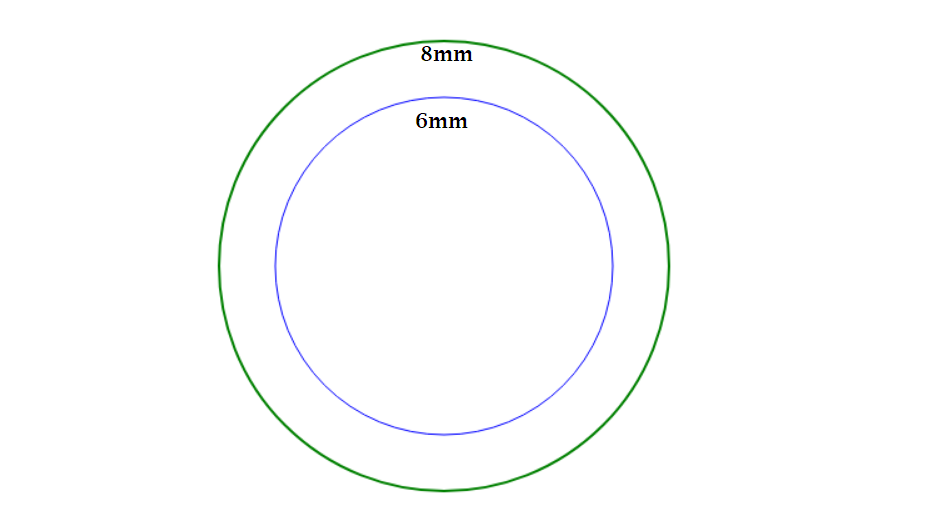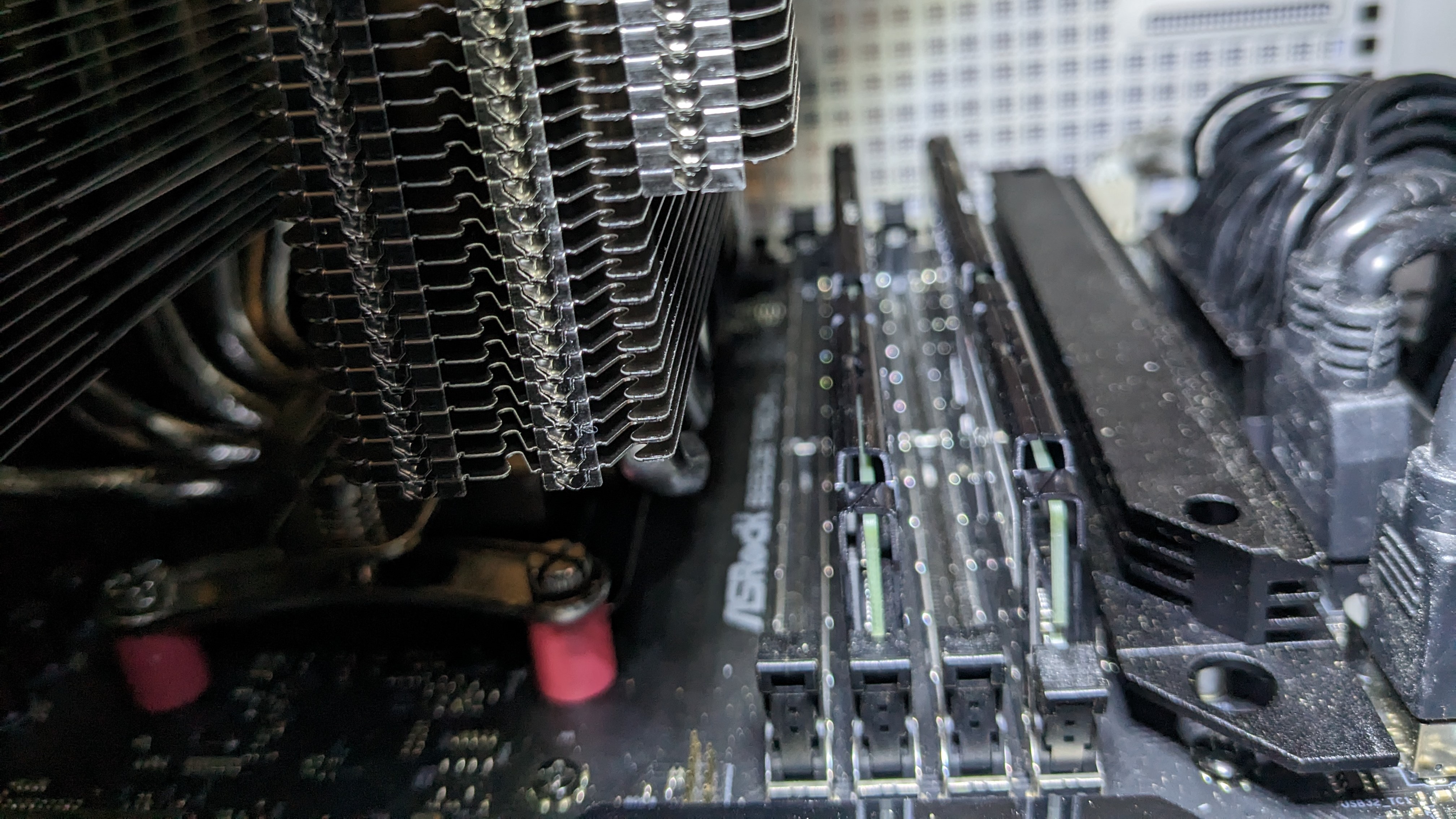Tom's Hardware Verdict
Thermalright’s Frost Commander raises the bar for performance and value, but it’s a bit noisy.
Pros
- +
Best i7-13700K results of any air cooler
- +
Only $50
- +
Unusually thick 8mm copper heatpipes
Cons
- -
Fans are loud at full speed
Why you can trust Tom's Hardware
Thermalright established itself as a top cooling contender in decades past, with options like its all-copper SP94 cooler. More recently, its Peerless Assassin is often considered the best value air cooler on the market these days. And we use the company’s LGA 1700 Contact Frame in our cooling reviews to keep socket bending at bay.
Today we’ll be looking at Thermalright’s Frost Commander 140, an air cooler with a bit more bulk than the company’s Peerless Assassin. Most air coolers on the market feature four to six 6mm heatpipes, but the Frost Commander features five thicker heatpipes with an 8mm thickness. Is that, plus the cooler’s moderate $50 price, enough to make it one of the best CPU coolers you can buy? That depends in part on how much you value silence under heavy loads. But before we put the cooler through our usual tests, let’s take a look at the full specs.
Thermalright Frost Commander 140 Specifications
| Cooler | Thermalright Frost Commander 140 |
| MSRP | $49.92 USD |
| Installed Size | 140 (L) x 121 (W) x 158 mm (H) |
| Heatsink Material | Aluminum |
| Heatpipes | 5x 8mm heatpipes |
| Socket Compatibility | Intel Socket LGA 1700/1200/115x/2066/2011(v3) AMD AM5 / AM4 |
| Base | Nickel plated Copper |
| Max TDP (Our Testing) | 240W on Intel i7-13700K, 129W on AMD Ryzen 7 7700X |
Packing and Included Contents
The box for the Frost Commander 140 arrives in is larger than other coolers of a similar size because the contents are protected by thick molded foam to insure the product arrives undamaged.
Included with the package are the following:
- Dual Tower Heatsink
- Fan clips for two fans
- One 140mm fan, one 120mm fan
- A medium-sized tube of TF7 thermal paste
- PWM splitter
- User Manual
- Mounts for all modern CPU sockets (including AM5 & LGA1700)
Installation on LGA1700 and AMD AM4 AM5
The installation process is mostly simple on both AMD and Intel platforms.
1. If you’re running an AMD Ryzen system, you’ll need to start by removing the default retention bracket. Intel users will need to apply the backplate to the motherboard.
2. Intel users will need to secure the backplate with included metal standoffs. Ryzen users will use the plastic standoffs instead.
Get Tom's Hardware's best news and in-depth reviews, straight to your inbox.
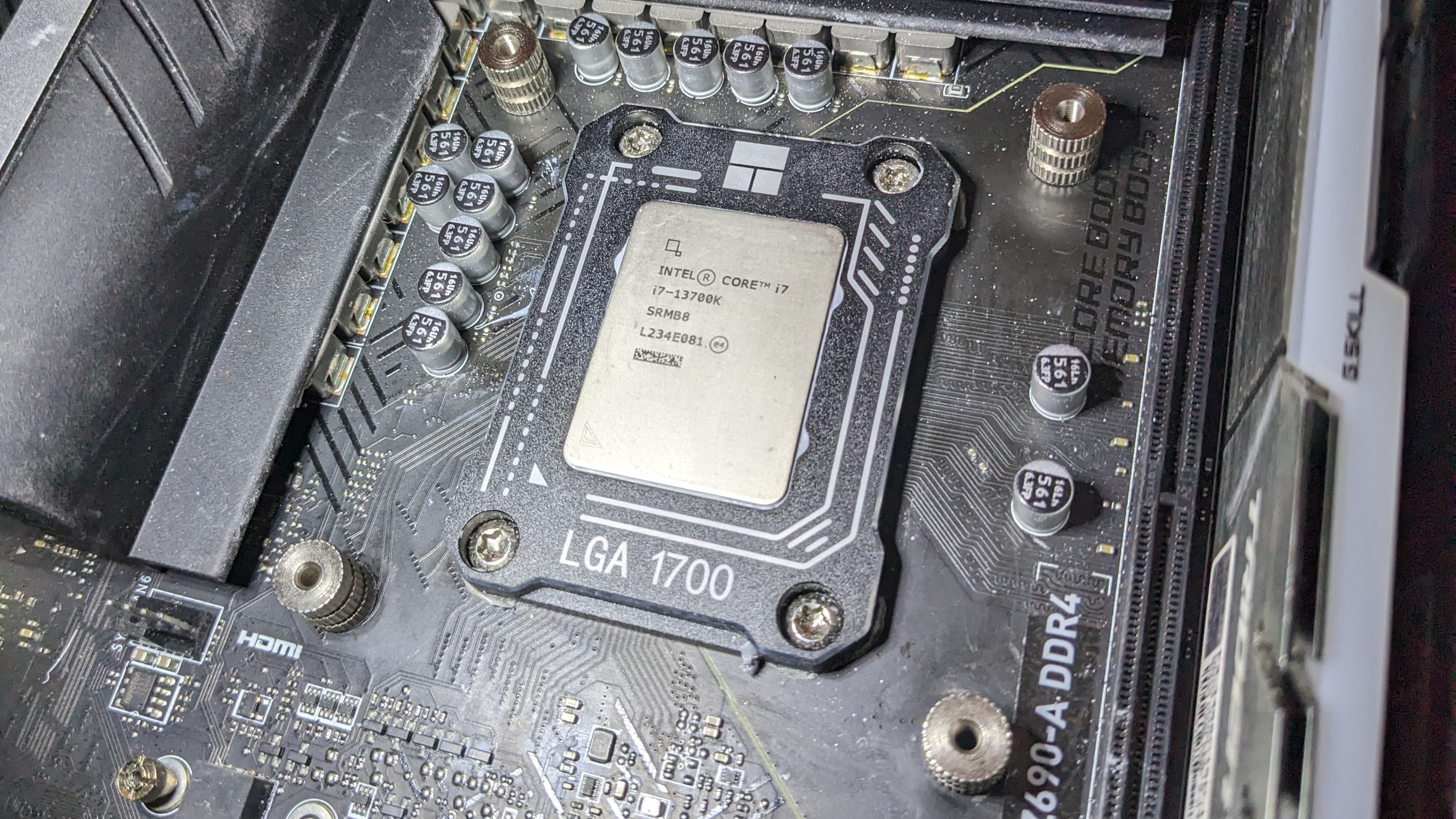
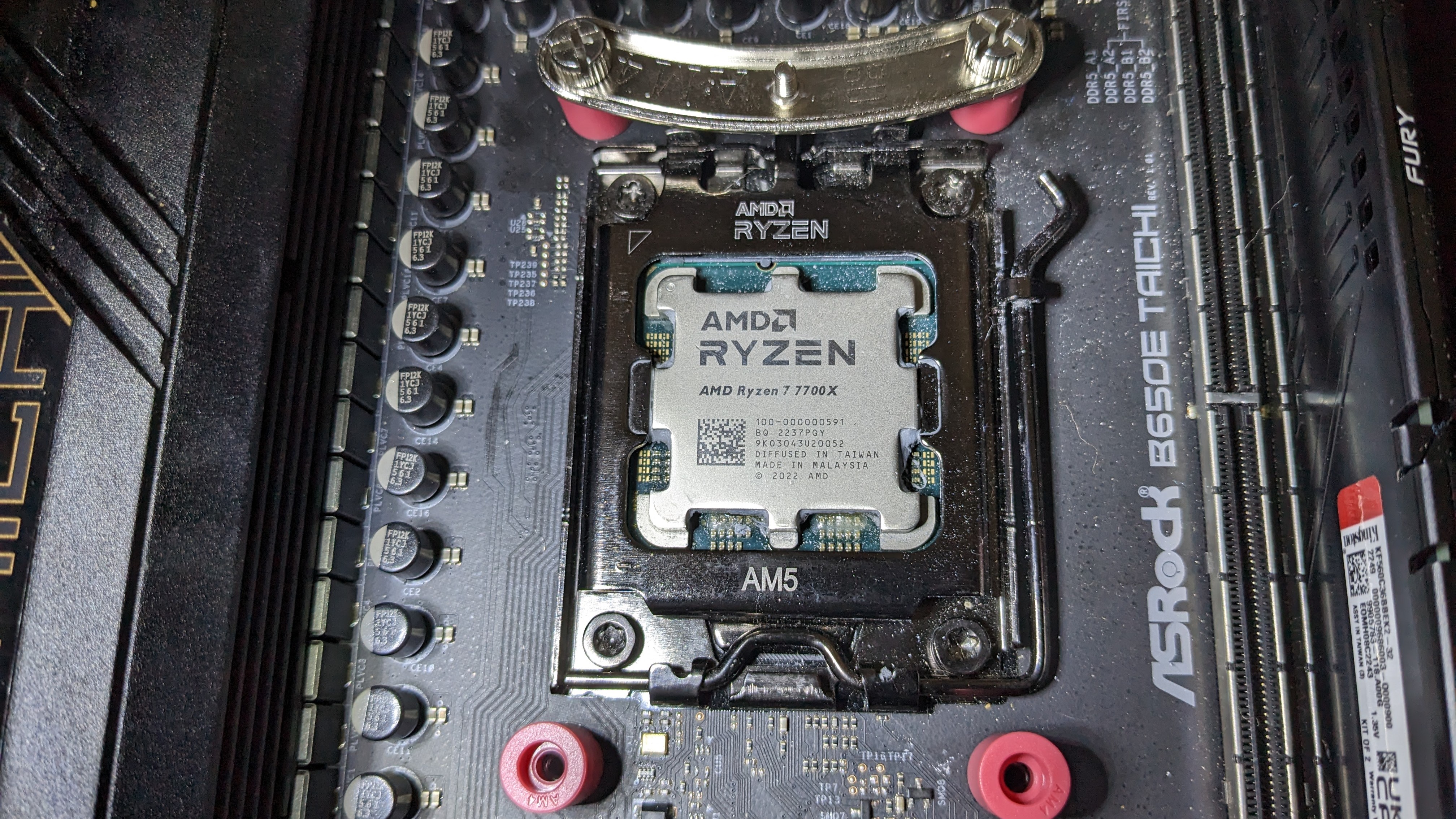
3. The next step is to place the mounting bars on top of the standoffs and secure them with the included screws.
4. Apply thermal paste to the CPU and then place the heatsink against the mounting bars. Secure the heatsink with a screwdriver.
5. Finally, install the fans using the provided fan clips. This is the only annoying part of the installation process, as the clips are extremely tight and somewhat difficult to install correctly.
Features of Thermalright’s Frost Commander 140
⋇ Thick 8mm heatpipes
The heatpipes included with the Frost Commander 140 are 8mm thick, 33% wider than the typical 6mm heatpipes found in other coolers. As we’ll see soon in testing, the thicker heatpipes provide a significant advantage in thermal dissipation.
⋇ Full RAM Compatibility in default configuration
In it’s default configuration, the Frost Commander 140 doesn’t interfere with RAM slots, as the fans are on the back and middle of the unit. However, if you use the fan on the front of the unit, RAM compatibility is limited to 42mm. But you can raise the fan a few mm to accommodate larger RAM sizes without impacting cooling performance.
⋇ 158mm Height
With a height of only 158mm, you won’t have any problems fitting this cooler in most cases.
⋇ Mixed Fan Sizes for a Vortex Effect
There’s more to a cooler than just the heatsink or radiator. The bundled fans have a significant impact on cooling and noise levels. The Frost Commander 140 features two fans of different sizes – one 140mm, the other 120mm. This configuration creates a vortex effect which can help improve static pressure.
| Model | Thermalright TL-D14X/ TL-C12 Pro-G |
| Dimensions | 140 x 152 x 27 mm/120 x 120 x 25mm |
| Fan Speed | Up to 1800/1850 RPM +- 10% |
| Air Flow | Up to 95.5/82 CFM |
| Air Pressure | Up to 2.25/2.1 mmH2O |
| Bearing Type | S-FDB Bearing |
| Lighting | None |
| MFFT | Unlisted |
Cooling Considerations
Modern high-end CPUs, whether Intel or AMD, are difficult to cool in intensive workloads. In the past, reaching 95 degrees Celsius-plus on a desktop CPU was sually a cause for concern – but with today’s fastest processors, it is considered normal operation. Similar behavior has been present in laptops for years due to cooling limitations in tight spaces.
Since last fall, Tom’s Hardware has brought you cooling reviews using one of the most power-hungry desktop CPUs on the market – Intel’s flagship i9-13900K. To give you an idea of what it takes to cool Intel’s behemoth, we’ve tested it with a variety of coolers from basic low-end air coolers like the Amazon Basics cooler to high-end 420mm AIOs such as Corsair’s iCUE H170i Elite.
While it’s nice to see how Intel’s flagship responds to different levels of cooling, those results don’t always correlate with lower-tier CPUs. Today’s review features two CPUs more commonly purchased by end users – AMD’s Ryzen 7 7700X and Intel’s i7-13700K.
LGA1700 Socket Bending
Note there are many factors other than the CPU cooler that can influence your cooling performance, including the case you use and the fans installed in it. A system's motherboard can also influence this, especially if it suffers from bending, which results in poor cooler contact with the CPU.
In order to prevent bending from impacting our cooling results, we’ve installed Thermalright’s LGA 1700 contact frame into our Intel testing rig. If your motherboard is affected by bending, your thermal results will be worse than those shown below. Not all motherboards are affected equally by this issue. I tested Raptor Lake CPUs in two motherboards. And while one of them showed significant thermal improvements after installing Thermalright’s LGA1700 contact frame, the other motherboard showed no difference in temperatures whatsoever! Check out our review of the contact frame for more information.
Testing Methodology
All testing is performed at a 23C ambient room temperature. Multiple thermal tests are run on each CPU to test the cooler in a variety of conditions, and acoustic measurements are taken with each result. These tests include:
1. Noise normalized testing at low noise levels
2. “Out-of-the-box”/default configuration thermal & acoustics testing.
a.) This means no power limits on Intel’s i7-13700K, and AMD’s default power limits on AMD’s Ryzen 7 7700X.
b.) Because CPUs hit Tjmax in this scenario, the best way to compare cooling strength is by recording the total CPU package power consumption.
3. Thermal & acoustics testing in power-limited scenarios.
a.) With Ryzen 7 7700X, I’ve tested with limits of 95W and 75W enforced.
b.) On Intel’s i7-13700K, I’ve tested with limits of 175W and 125W enforced.
The thermal results included are for 10-minute testing runs. To be sure that was sufficiently long to tax the cooler, we tested both Thermalright’s Assassin X 120 R SE and DeepCool’s LT720 with a 30-minute Cinebench test with Intel’s i9-13900K for both 10 minutes and 30 minutes. The results didn’t change much at all with the longer test: The average clock speeds maintained dropped by 29 MHz on DeepCool’s LT720 and 31 MHz on Thermalright’s Assassin X 120 R SE. That’s an incredibly small 0.6% difference in clock speeds maintained, a margin of error difference that tells us that the 10-minute tests are indeed long enough to properly test the coolers.
Testing Configuration – Intel LGA1700 Platform
| CPU | Intel Core i7-13700K |
| Comparison Coolers Tested | BeQuiet! Dark Rock Pro 4 Cooler Master Master Air MA824 Stealth Cooler Master Hyper 622 Halo Cooler Master Master Liquid Core 360L Cougar Forza 85 Essential DeepCool Assassin IV DeepCool LT720 EKWB Nucleus CR360 Lux Jiushark JF13K Diamond Lian Li GA II Performance Thermalright Silver Soul 135 Thermalright Peerless Assassin Montech D24 Premium MSI CoreLiquid MEG S360 Noctua NH-D15S |
| Motherboard | MSI Z690 A Pro DDR4 |
| GPU | Intel ARC A770 LE |
| Case | Be Quiet! Silent Base 802, system fans set to speed 1 setting. |
| Monitor | LG 45GR95QE |
| PSU | Cooler Master XG Plus 850 Platinum PSU |
Testing Configuration – AMD AM5 Platform
| CPU | AMD Ryzen 7 7700X |
| Motherboard | ASRock B650E Taichi |
| GPU | Intel ARC A770 LE |
| Case | DeepCool CK560WH |
| Monitor | LG 45GR95QE |
| PSU | Cougar Polar X2 1200W |

Albert Thomas is a contributor for Tom’s Hardware, primarily covering CPU cooling reviews.
-
Albert.Thomas Addendum: I'm testing BeQuiet's new Dark Base Pro 901 computer case right now, using Thermalright's Frost Commander 140 to test it's noise reduction features.Reply
In this setup I've got Intel's i9-13900K - which can push more watts than the i7 featured in this review - and depending on the system fan settings, Thermalright's Frost Commander 140 is cooling 265W +-5W with Intel's i9-13900K. -
Math Geek just a few more $ than the peerless assassin and it sure looks like a winner to me.Reply
even swapping out some quieter fans and your still well below the cost of the other top air coolers by a long shot. -
-Fran- Thanks for the review as always, Albert.Reply
Looks like there's a new kid in the block, walking all hung ho, heh.
Regards. -
dannyboy3210 That certainly looks like an interesting cooler.Reply
Just to check, should the first chart on page two (Thermal Results with noise normalized to 38.2 dBA) have the Thermalright Peerless Assassin?
I don't see it there although it appears to be in most of (if not all) the other charts. -
cyrusfox Nothing better than a big slab of metal. the heatsink alone is 1kg!If you got the space for it, this makes a lot of senseReply -
Albert.Thomas Reply
You'll find it in the noise normalized results for Ryzen 7 7700X, but I forgot to do the noise normalized testing when I retested it on the i7.dannyboy3210 said:That certainly looks like an interesting cooler.
Just to check, should the first chart on page two (Thermal Results with noise normalized to 38.2 dBA) have the Thermalright Peerless Assassin?
I don't see it there although it appears to be in most of (if not all) the other charts. -
Albert.Thomas Reply
Hmm, maybe I'll have to do some fanless testing on it :DAmdlova said:My be can run passively on 35w cpu -
Lucky_SLS ReplyAlbert.Thomas said:Hmm, maybe I'll have to do some fanless testing on it :D
That would gives us the qualitative number on how much heat the heatsink design can soak up. The rest is upto the surface area, airflow and convection for cooling. This gives me a cool idea:
maybe add in other fancy stuff like:
scanning the heatsink and giving us surface area numbers - coldplate, heatpipe and finstack
have schlieren imaging to see the airflow

